Vegetables in coconut milk, known as Lodeh Vegetables, is a popular dish in Indonesia, Malaysia and Singapore. This simple vegetable curry recipe brims with colorful vegetables and is bursting with taste, while turmeric lends it a lovely yellow hue.
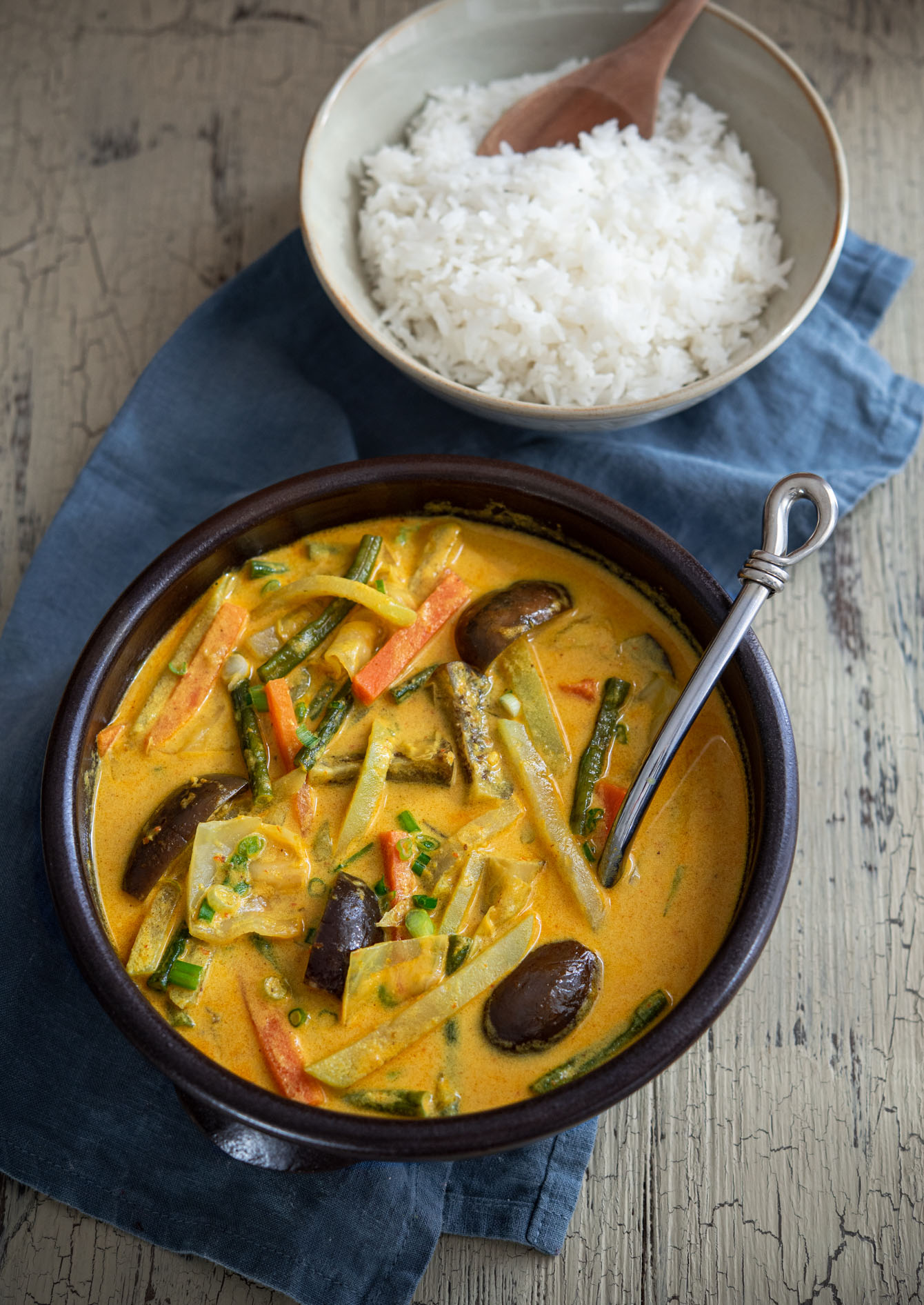

Whenever I see leftover vegetables in my fridge, I always think of making a vegetable curry with coconut milk. I have tasted numerous vegetable curries in restaurants over the years, but I always go back to this curry recipe that I learned from an Indonesian girl who used to live with my family when we lived in Hong Kong many years ago.
Her name was Utari. She was a quiet, shy young girl from a small village near Surabaya, Indonesia, who dreamed of having her own restaurant in her hometown someday. She loved K-pop and K-drama even back in those times.
I don’t think I could have enjoyed Hong Kong as much as I did if she was not there for me. She loved Korean food and quickly learned to make kimchi, Korean soups and stews, and other dishes from me.
In return, I learned how to make Indonesian curries, satay, and fried rice from her. This dish, vegetables cooked in coconut milk called Sayur Lodeh, was perhaps my favorite. It’s one of the top Southeast Asian recipes that I adore.
I was told that Sayur Lodeh was a breakfast food in Indonesia. But, in my house, it was served as a weeknight dinner with grilled chicken satay and pineapple salad.
My family was sad to leave Utari behind when we left Hong Kong. I don’t think I thanked her enough for her service to my family. I still think of her from time to time and wish her the best wherever she is.
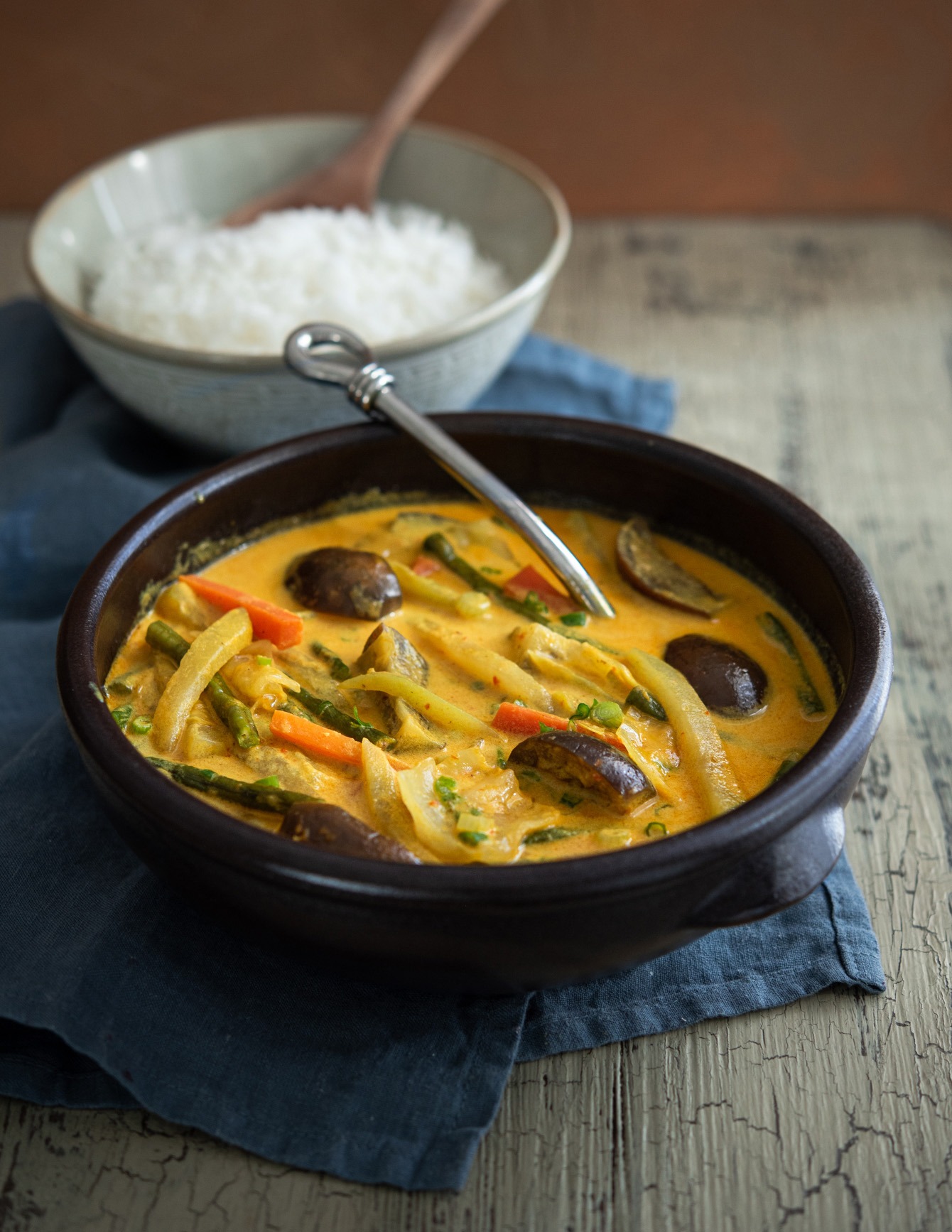

What is Sayur Lodeh
Sayur lodeh is a traditional Indonesian vegetable stew. The word “Sayur lodeh” can be translated into English as “vegetable stew” in coconut milk.
It’s made with a variety of vegetables like eggplant, long beans, and cabbage, all simmered in a savory coconut milk broth flavored with spices. It’s a hearty and comforting dish, often served with rice.
Although the name vegetables in coconut milk might make you think as vegetarian, it’s not vegetarian. Many Indonesian and Malay vegetable recipes uses dried shrimp (or shrimp paste) to bring flavor to the dish. Therefore, Sayur Lodeh or Sayur Lemak is not compatible with a strict vegetarian diet.
Lodeh Vegetables vs Fat Vegetables
This Indonesian vegetable curry is also known as Sayur Lemak in Malaysia and Singapore. Both names indicate vegetables cooked in coconut milk.
Indonesians call it Sayur Lodeh while the name Sayur Lemak is more widely used in Malaysia and Singapore.
- Vegetables = vegetables (in both the Indonesian and Malay languages)
- Lodeh = a vegetable dish cooked in coconut milk
- Lemak = creamy or fatty in culinary terms. Anything that has been cooked in coconut milk.
Vegetable choices
This vegetabel curry is vesatile, allowing for a wide range of vegetables. While jicama and chayote are traditional choices, many people use more varied selection.
Choose a variety of at least 3-4 different colorful vegetables from the list below.
- Snake beans (long bean) or Green beans
- Thai eggplant or other Asian eggplant
- Green cabbage
- Potato
- Carrot
- Tomato
- Pumpkin
- Bamboo shoot
- Bean curd
- Bell pepper
Helpful Tips for This Recipe
This is a very simple recipe and does not require any specific culinary skill. However, maintaining a good balance of the flavor and the creaminess of the coconut milk is important.
Coconut milk is the main ingredient in this recipe. It contributes to the creaminess of the dish. But too much coconut milk will make this curry overwhelmingly rich and will distract from the flavor of vegetables.
As a substitute, you can opt for almond milk or cashew milk but it will alter the taste. It might taste okay, but it won’t be Sayur Lodeh.
How to make Sayur Lodeh (Vegetables in Coconut Milk)
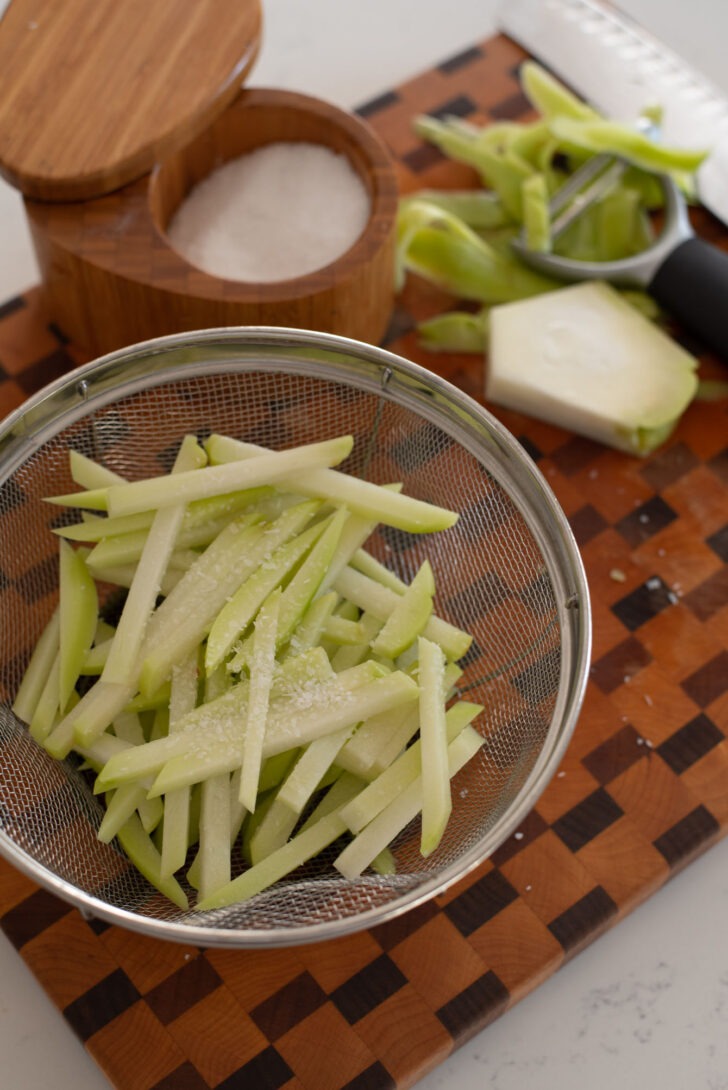

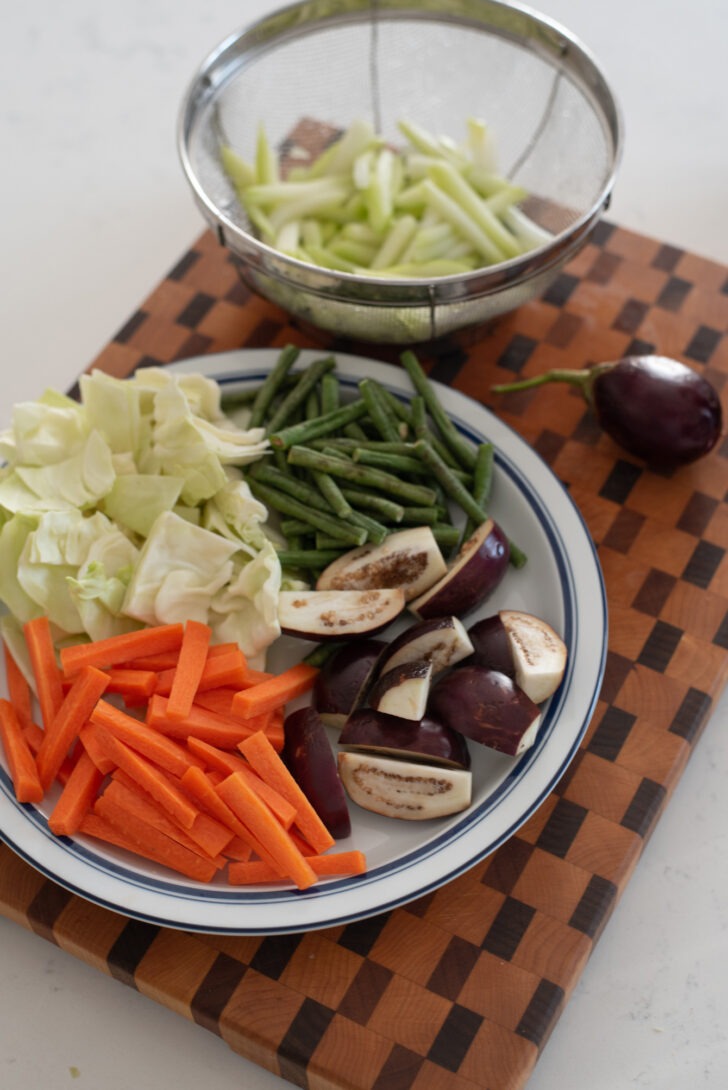

Step 1. Prepare vegetables.
Peel and slice chayote and dice other vegetables into bite size pieces.
How to prepare chayote: Chayote is somewhat slimy when you peel off the skin. To remove the sliminess, rub the chayote slices with 1 teaspoon of salt for 30 seconds and rinse with water. That will soften the texture and make them less slimy.
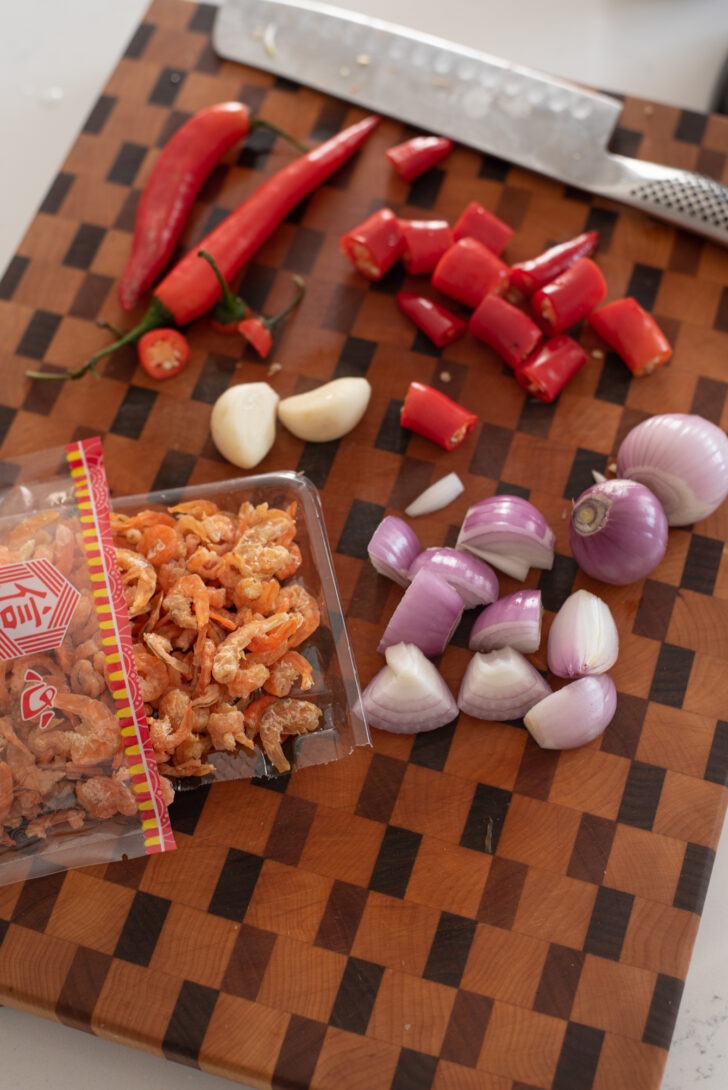

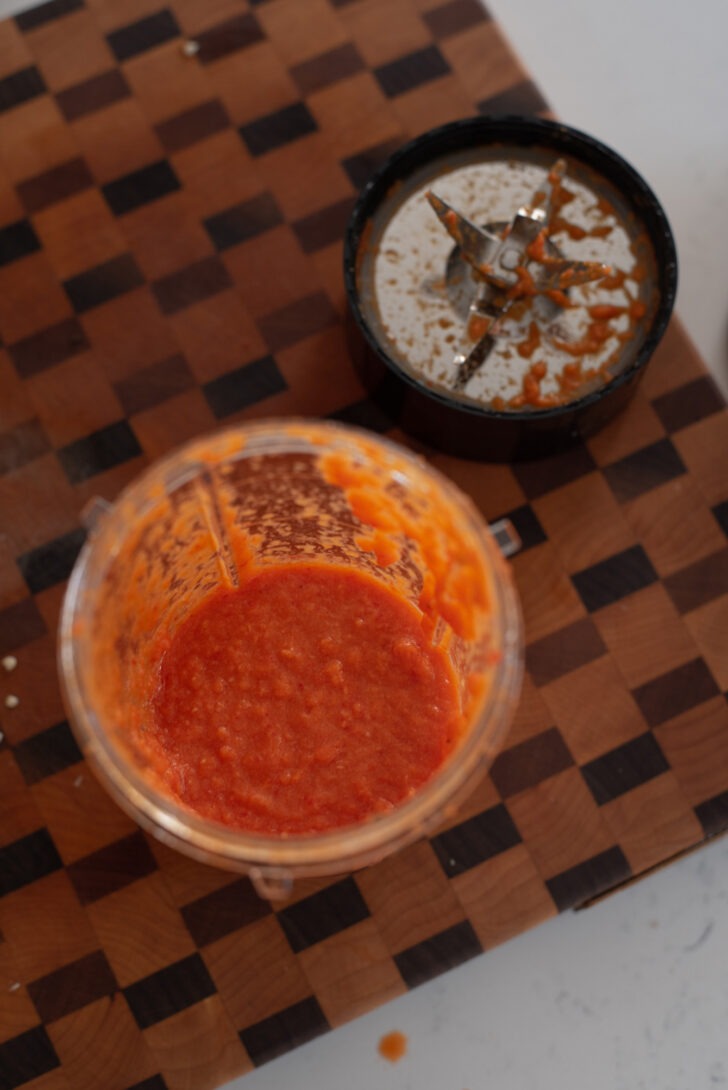

Step 2. Make spice paste (Lodeh paste)
Combine diced red chilies, shallot, garlic, dried shrimp in a small personal blender and add a few tablespoons of water to help the blade run. Process until a smooth paste forms. You can also go the traditional route by using a mortar and pestle to make the spice paste. Just pound the ingredients until it forms a paste.
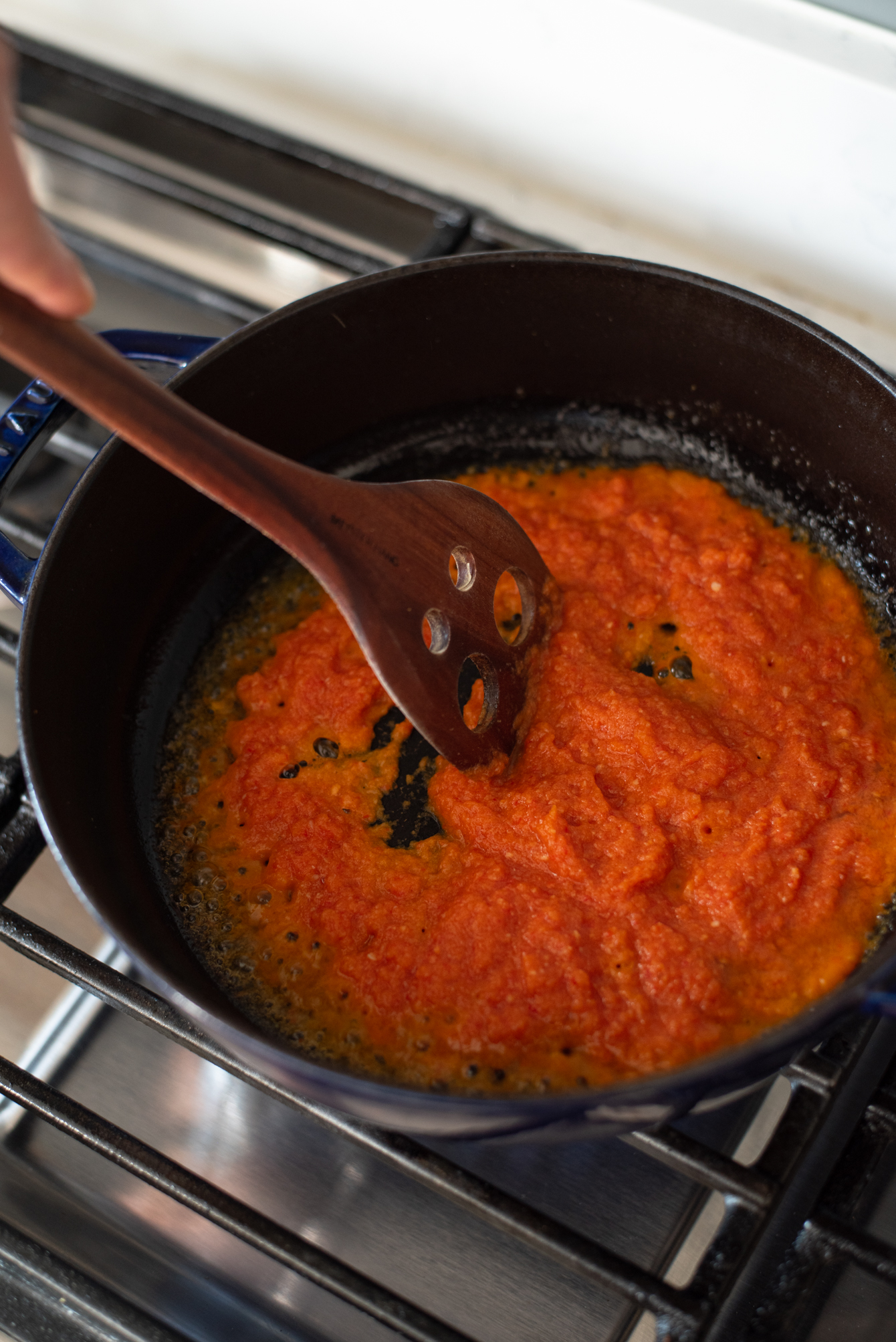

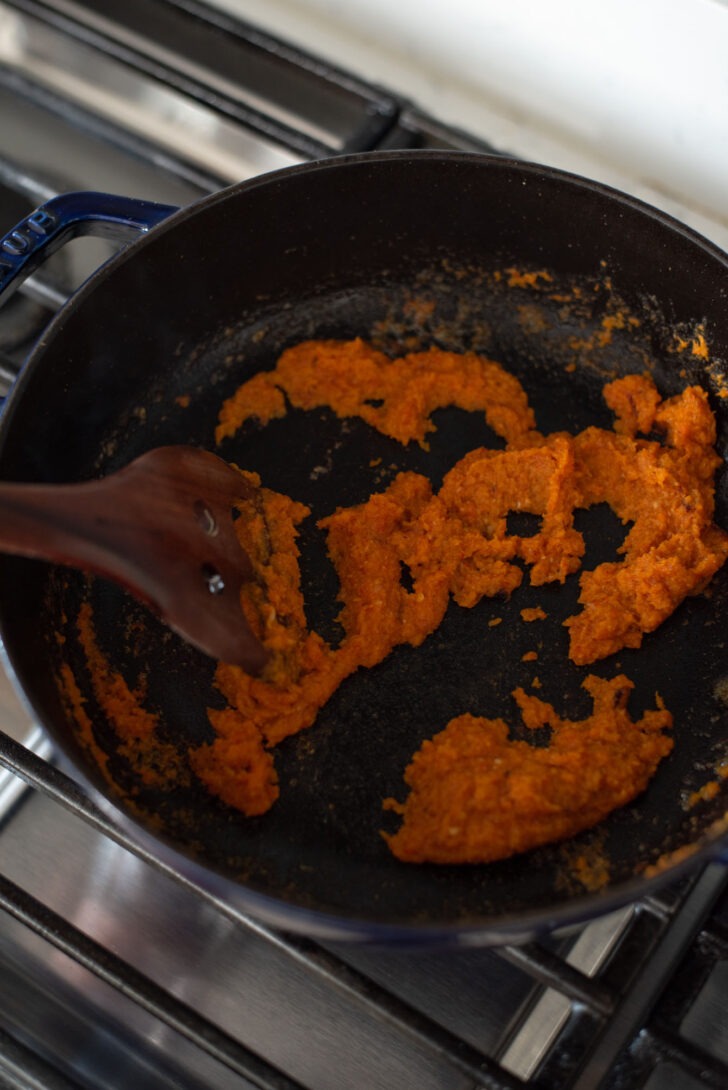

Step 3. Fry the spice paste.
Heat oil in a pot over medium heat. Add the spice paste and cook for 4-7 minutes until it loses some of its water content.
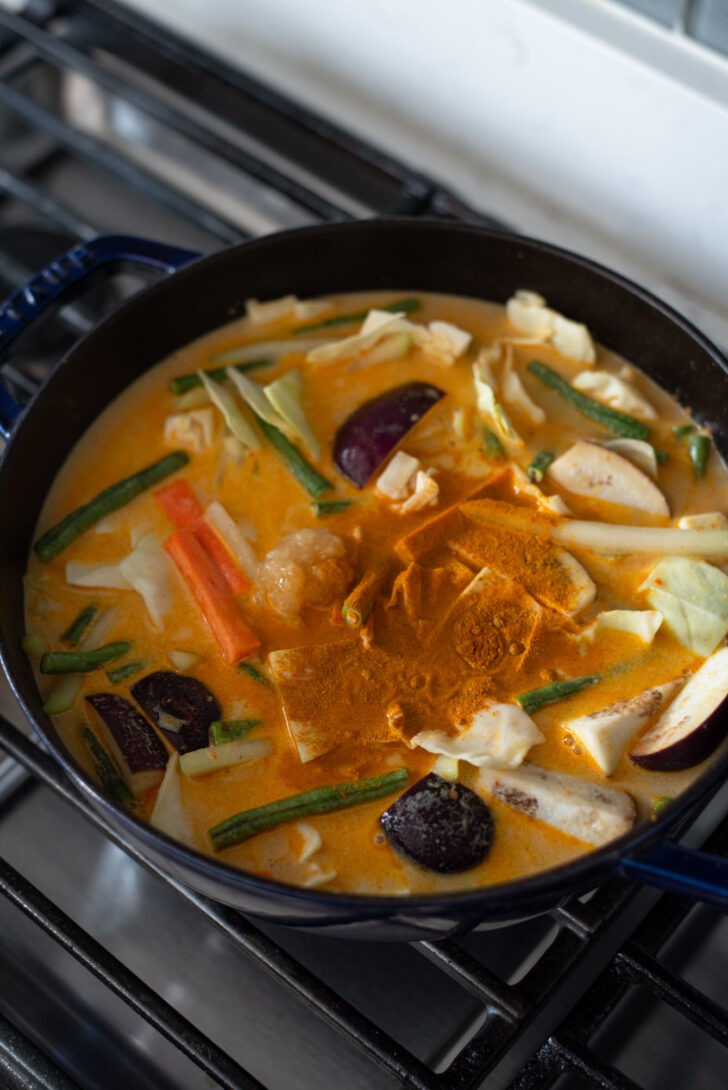

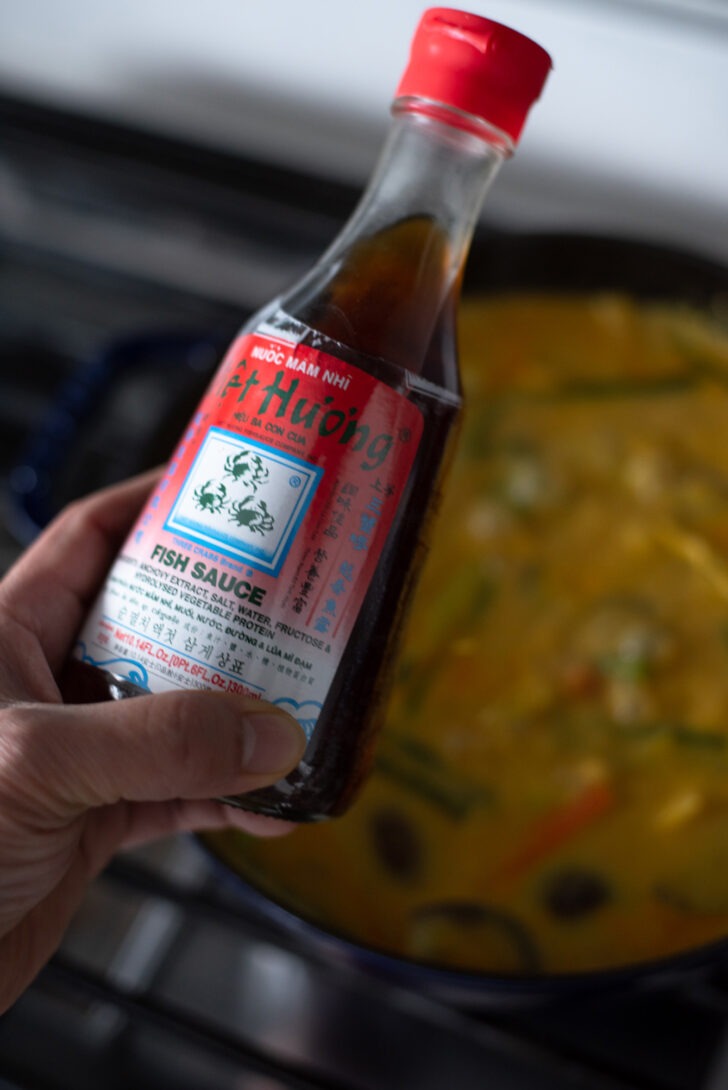

Step 4. Add vegetable, coconut milk and spice
Add the coconut milk, water, vegetables, ginger, and turmeric. Simmer for 10-15 minutes, uncovered, until the vegetables are tender. Season with fish sauce to your liking.
Stir this beautiful curry stew occasionally. Do not let it come to a full boil–you don’t want the coconut milk to curdle.
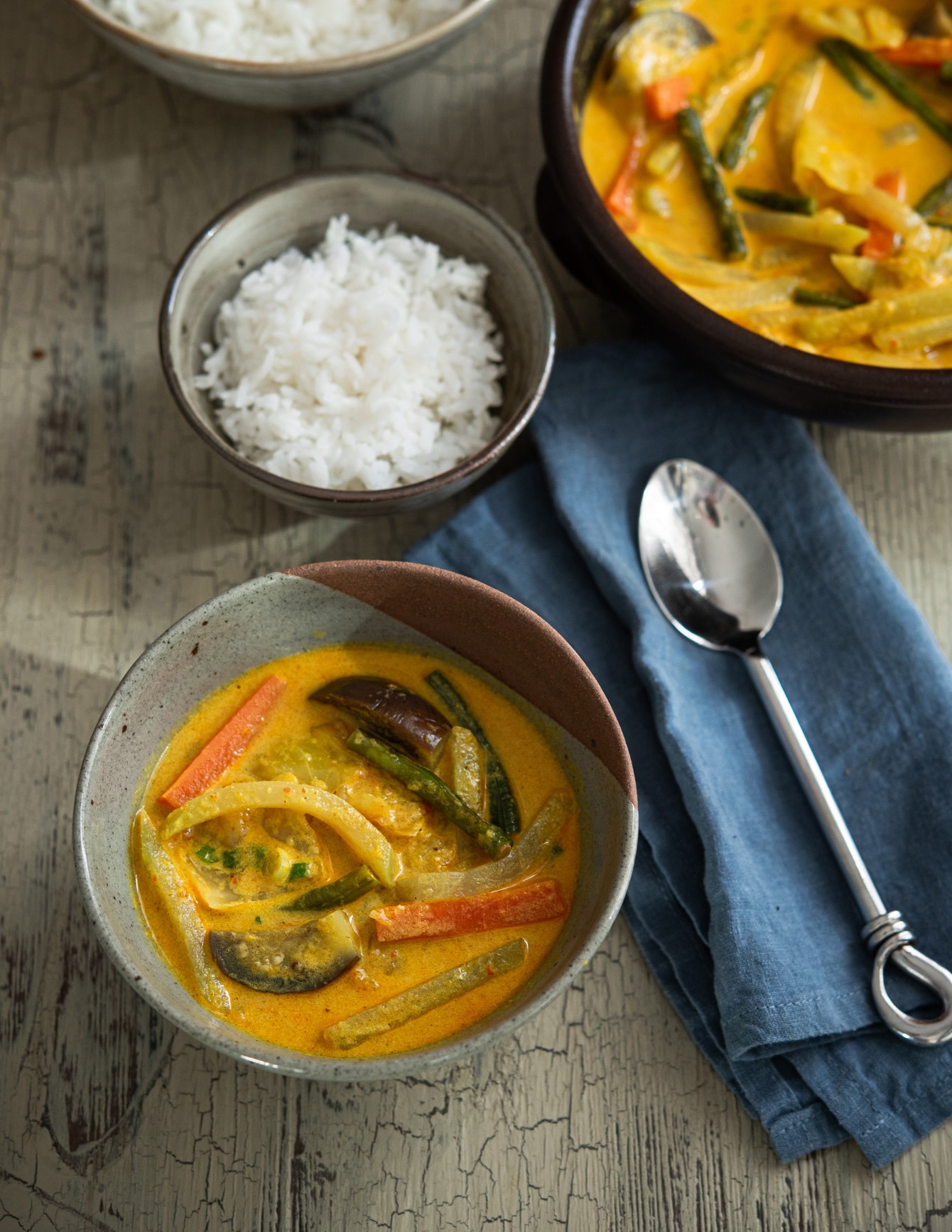

Serve vegetable curry hot with white rice on the side. Enjoy it as a savory breakfast or simple lunch.
Reheating Vegetable Curry
Keep leftover sayur lodeh in a refrigerator for up to 1 week. This vegetable curry reheats well in a microwave or you can use stove top until it gets hot.
More Curry Recipes
If you love curry, here are some of my favorite that I recommend you to try. You won’t be disappointed.
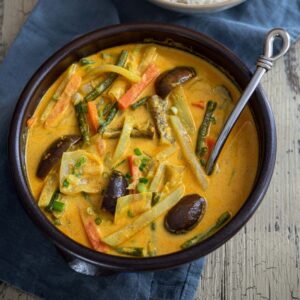

Vegetables in Coconut Milk (Sayur Lodeh)
Sayur Lodeh is a popular Indonesian vegetable dish cooked in coconut milk. This easy vegetable curry recipe is loaded with colorful veggies and packed with flavor. Turmeric is used to give it a beautiful shade of yellow.
- 1 tbsp oil
- 1 cup coconut milk
- 2 cup water
- 1/4 small cabbage, diced
- 1 squash, peeled and sliced into thin matchsticks
- 1 carrot, peeled
- 1/4 lb green beans, or snake beans, cut
- 1 Asian eggplant, or 3 Thai egg plant
- 1 tsp ginger paste
- 1/2 tsp turmeric powder
- 1 tbsp fish sauce to taste, or more to taste
For spice paste
- 3 tbsp dried shrimp
- 5 red finger chili, sliced (seed removed, if you prefer less spicy)
- 3 shallot, peeled and cut into chunks
- 2 cloves garlic
- 1 -2 Tbsp water
-
Cut all the vegetables into a desired bite size pieces or matchsticks. For chayote, rub the chayote slices with 1 teaspoon of salt for 30 seconds and rinse with water. That will soften the texture and make them less slimy.
-
To make the spice paste, combine diced red chilies, shallot, garlic, shrimp in a small blender and add 1-2 tablespoons of water to help the blade run. Process until a smooth paste forms. You can also go the traditional route by using a mortar and pestle to make the spice paste. Just pound the ingredients until it forms a paste.
-
Heat oil in a pot over medium heat. Add the spice paste and cook for 4-7 minutes until it loses some of its water content.
-
Add the milk, water mixture, vegetables, ginger, and turmeric. Simmer for 10-15 minutes, uncovered, until the vegetables are tender. Stir the stew occasionally. Do not let it come to a full boil–you don’t want the coconut milk to curdle.
-
Season with fish sauce to your liking. Serve hot with rice.
Calories: 269kcal, Carbohydrates: 22g, Protein: 14g, Fat: 17g, Saturated Fat: 11g, Polyunsaturated Fat: 1g, Monounsaturated Fat: 3g, Trans Fat: 1g, Cholesterol: 126mg, Sodium: 789mg, Potassium: 769mg, Fiber: 6g, Sugar: 11g, Vitamin A: 3349IU, Vitamin C: 112mg, Calcium: 127mg, Iron: 4mg

